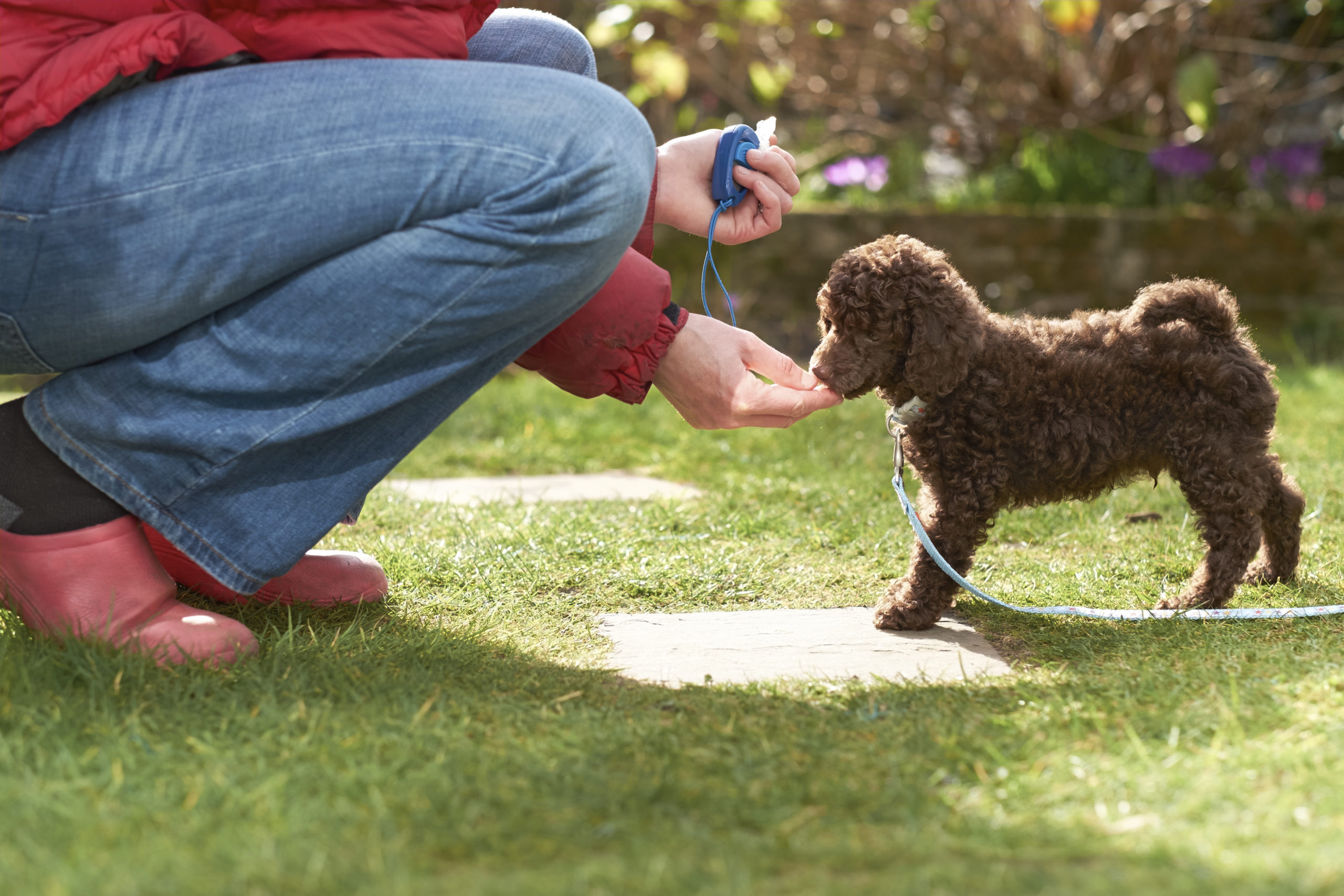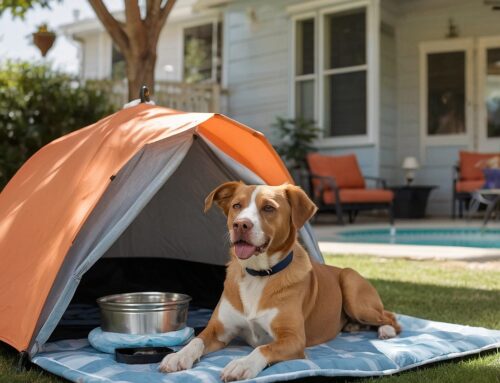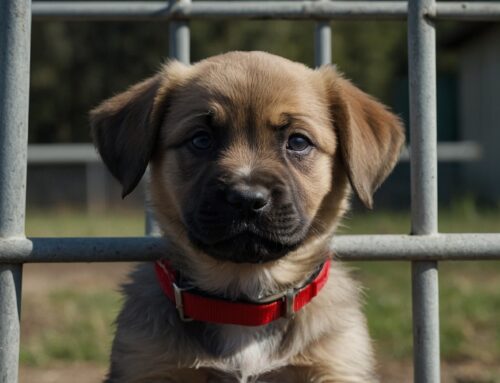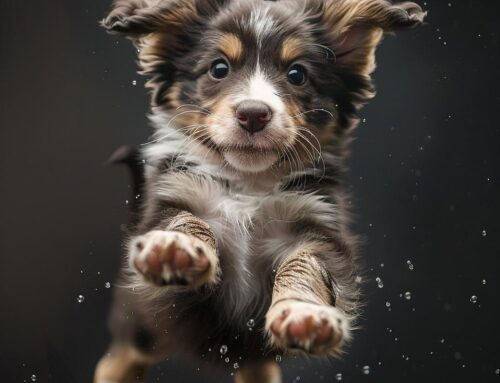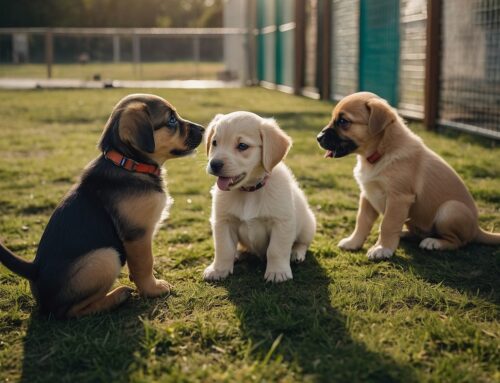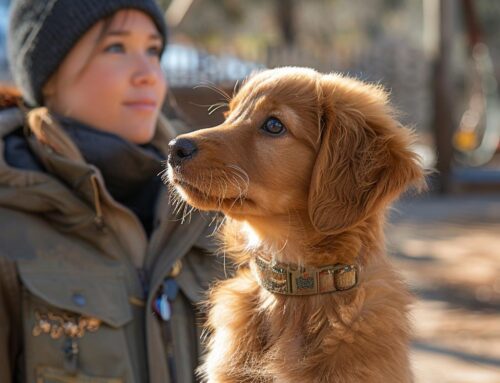Getting a new puppy as a birthday or holiday gift is about as exciting as it gets! But to assimilate your new pup into your life and household means being prepared. In our last “new puppy” post, we discussed the following preparation topics:
- Getting supplies
- Puppy-proofing your home
- Making your yard safe
- Naming your puppy
To help you as you move forward with your puppy’s transition, this article focuses on these topics:
- Meeting other household members
- Dealing with the first few days
- Teething
- The Yappy Puppy Program
Home-Coming Anxiety
When you first bring your puppy home, be aware that he is bound to be anxious and even downright scared. Remember, he had just left his mother, siblings, and the only humans he had known previously, a perfect setup for possible separation anxiety.
Therefore, you want to avoid “throwing” your puppy into a loud, crazy, and strange environment filled with unknown people and creatures. Your puppy’s anxiety can also last for his first few weeks in his new home. Here are some of the behaviors that may indicate your puppy is feeling anxious.
- Barking for long periods
- Whining
- Chewing uncontrollably and destructively
- Pawing at the crate or enclosed barriers
Besides during a homecoming, you may see your puppy exhibiting these separation anxiety behaviors for several weeks, especially if he is left alone for long periods.
Meeting the Adult Humans
Though the temptation may be strong to invite all your non-resident family members and neighbors to meet your new puppy right off the bat, think about such a scene from the puppy’s viewpoint.
- Your puppy has just left the warmth and safety of his mother and siblings.
- Your puppy is being bombarded with new smells and sights.
- Your puppy is terrified and thus, the more is not the merrier.
In other words, remove all other pets from the immediate welcome scene and keep small children in another room at first. Confine the welcome to a small area with just immediate family adults present. Put the puppy down and let him sniff each person.
Save introductions with the small humans until later.
Meeting the Children
Small children will be excited to meet their new puppy friend, and are likely to want to touch, pet, and pick him up. They may also be inclined to shout or talk loudly or even argue among themselves as to who’s going to be first to pet or pick the puppy up.
Instruct the children in the proper ways to handle a puppy and that like babies, puppies need to rest a lot.
Keep in mind that puppies bite and like to play, both of which can be too much for a small child. Always supervise all interactions between the puppy and your children.
Meeting the Pet Family Members
Most likely we’re talking fellow canine and feline household members that also require introductions to the puppy.
The first rule here is to keep the puppy separate from the other pets for several days. Once the puppy is used to the hustle and bustle of the household, but still in his confined area, allow all the pets to sniff each other through a baby gate or the door of the puppy’s crate. Do this for several times each day.
Finally, once the pets know one another’s smells, allow the resident pets into the puppy’s confined area while the puppy is out of his crate. Once again, supervise this action closely.
Dealing with the First Few Days
How you handle your puppy’s first few days at home are crucial. Following is a checklist to guide you through a process that leads to success.
Starting Potty Training
On the first day, and before you even bring your puppy into your home, take him to the spot you have designated as his potty spot. This is a place you want to bring him to often during the day.
Some puppies get the idea that this is “their” spot right away while others may take a little more time. Take him out at least every 3 hours and after naps and meals. Taking him out often enables you to catch him doing something right, at which point you can reward him with praise and treats.
If your puppy has mistakes in your home, do not punish or reprimand him. Simply clean up the mess and promptly take him outside.
Easing into the Routine
It’s important that your puppy get the pulse of the household quickly, which means spending as much time with him as you can. Leaving a puppy alone for long periods will lead to separation anxiety behaviors and a very unhappy puppy.
One tactic to keep him with you in your daily routine and out of trouble is to attach him to you with a leash as you go about your business. This way you have an eye on him at all times and can learn to recognize the signs that he needs to go out.
Teething
Just as do human babies, puppies teethe. Puppy teething starts at about 8 weeks of age and can last until he is 6 to 8 months old. From a puppy-parent point of view, teething can be annoying, especially when your new pup has decided that chewing your expensive leather shoes or brand-new piece of furniture provide comfort for his sore gums.
If you’re not sure if your puppy is teething, here are some sure-fire signs:
- Small blobs of blood on his toys
- Increased chewing
- Tiny teeth around his bedding or toys
- Drooling
- Crying
- No desire to eat
- Red, swollen gums
Helping Your Puppy Through Teething
There are a few things you can do to help your puppy get through the teething process. Consider purchasing any of these teething toys:
- Soft rubber rings
- Soft plastic chew toys
- Teething sticks
- Bully sticks
In addition, consider freezing toys, especially when filled with soft treats. Gnawing on these will really soothe his sore gums.
Common Puppy-Parent Mistakes
Nothing is perfect, and such will be true as you work with your new puppy. But with some thought and knowledge, you can avoid the common mistakes new puppy-parents make. Some of these mistakes include:
- Vet visits and car rides: If the only time you take your puppy in the car is when you take him to the vet, he will quickly come to dread the car. To prevent this, add in plenty of trips to fun places like parks and playgroups.
- Grooming: Clipping nails and trimming fur can be a time of dread for puppies. Make grooming a fun time with treats, praise, and a fun atmosphere.
- Socialization: Just like you, your puppy needs to be around other dogs and puppies. Find a good doggy daycare or playgroup where your pup can play with other canines on a frequent basis.
- Table scraps: The temptation is there to give your pup treats from the table, but this is a poor choice for both his health and ensuing behavior issues.
- Your responses: Simply put, don’t hit, don’t yell, and don’t punish. These actions can destroy your relationship with your puppy as well as make him a scared, anxious little dog.
- Being alone: As we said before, leaving a puppy alone for long periods is punishment for a pup that just wants to be with his humans as much as possible.
Yappy Puppy Training
If you are feeling overwhelmed about the prospect of going it alone in training your puppy, you are not alone. This is precisely why we offer Yappy Puppy, a unique program that bridges the gap between getting young puppies off on the right foot to when they can enter more formalized training.
Here’s how it works. When you sign up for our Yappy Puppy program, you receive 2 private lessons with our expert trainer, David Greene. These sessions cover the following:
- Potty training
- Crate training
- Correct ways to socialize a puppy
- How to stop mouthing and biting
- How to stop jumping
- How to address puppy shyness
- And other helpful must-have tips and guidance
After you’ve had time to work on these things and once your pup has reached 5 months, he then enters our two-week Basic Behavior Modification Board and Train Program where, in addition to reinforcing the skills he learned in Yappy Puppy, he will also learn the following skills:
- Walking politely on a leash – no pulling and being in the correct position
- Recall – the puppy comes when called
- Go to your place command
During this 2-week, boarding program, we will send you regular updates on how your puppy is doing.
Having a new puppy in your home is one of life’s greatest pleasures. With careful planning and some help from your Performance K9 friends, you and your puppy will be off and running to a life filled with joy, love, and companionship.



